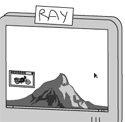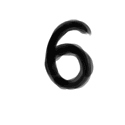|
minato posted:I was intrigued by this and took a brief look, but it seems Dash is (a) targeted at data science workflows rather than general purpose stuff, and (b) requires Dash Enterprise (for presumably $$$) if I wanted to do anything that wasn't a toy. Was that a misjudgement? Do you have an example of a "regular" website built in Dash you could point me at? What's a regular site in your book? I think of a "regular" site as a SaaS product/app + marketing homepage + various pages served on templates from a DB with some user, account and payment functions. This would not be a good choice for all of that, but might be a good choice for the "product" part of it. If the "product" part could be thought of as a single page app, it should definitely be considered IMO. It's tailored toward "build stuff really fast". For example take our company. We made a multi page app (read: a couple SPAs glued together) using dash for my sales team to enrich leads, report metrics and automate some stuff all behind a basic auth login. But our full "regular" website that needs marketing pages on various templates, a CMS with various levels of permissioning, a blog with multiple editors, I went with Django + DjangoCMS. Dash would not be a good choice here. Some examples: Here's a multi page example from dash bootstrap components to make a basic website with a navbar though apparently Plotly is expanding support for multi page dash apps. Example Bootstrap page with sidebar The DBC docs are made in Dash. Link: https://dash-bootstrap-components.opensource.faculty.ai/docs/ I don't really know who is using dash in the wild though. For me its been great making SPAs easier than with Django.
|
|
|
|

|
| # ? Jun 3, 2024 03:33 |
|
Yeah, grids are infinity times easier to wrap my brain around than I thought. My trouble came from reading documentation, but having something like Layoutit to visualize the grid and set the attributes I need to get the CSS/HTML back, being able to immediately see what I'm doing...makes so much more sense.
|
|
|
|
So i've built a few sites using Gatsby, Jekyll and Hugo along with Netlify CMS and have found it a pretty nice combo in all cases. I'm going to build my next thing using Eleventy, and was going to use Netlify CMS again, but recently found out it's been abandoned by Netlify and left to the community. Are there other free/open-source headless cms/editors out there that folks recommend? I've heard good things about Strapi and Tina, but both are fairly new I think. Coming from Wordpress, I'm still a little mystified that there's tons of SSG's out there, but they all just expect you to edit .md files directly. I understand why things were decoupled, but ask number one from users is "Ok, how do I edit/add posts?" and it seems like that's always more complicated than it used to be. "Let's choose an editor and integrate it ourselves" is not the answer most folks are looking for. Anyway, i'm mostly venting because i'm old!
|
|
|
|
Just use a headless WordPress with GraphQL. I've yey to find a CMS as "good" as WordPress. The aforementioned HubspotCRM is the closest I've found but it's a nightmare to interface with
|
|
|
|
Part of my tasks for my new job involves building out a form for users. One of these forms has a % input. All I'm trying to do is have a '%' symbol appear at the end of a user's input. I'm having difficulty finding a solution for this via my usual methods (google and stack overflow), does anyone have a way to do this with javascript/typescript/css? Here is an example of what I'm trying to do.  Anyone have a suggestion here?
|
|
|
|
Are you using a js framework? I think the term you want to search is input masking.
|
|
|
|
Verisimilidude posted:Part of my tasks for my new job involves building out a form for users. One of these forms has a % input. Yes, you can use css :after with a content: "%"; call on the text I believe
|
|
|
|
aperfectcirclefan posted:Yes, you can use css :after with a content: "%"; call on the text I believe
|
|
|
|
In that case just put a % next to the input and call it done imho
|
|
|
|
Yeah why make the percent sign part of the input? If anything force the field to be numbers only.
|
|
|
|
A common practice I've seen used often (and have used myself) is to do something like this:code:e: There are various form-styling frameworks out there that do this exact sort of thing for you, but I'm phone posting so I don't have access to them at the moment. kedo fucked around with this message at 19:30 on Feb 18, 2022 |
|
|
|
aperfectcirclefan posted:Just use a headless WordPress with GraphQL. I've yey to find a CMS as "good" as WordPress. The aforementioned HubspotCRM is the closest I've found but it's a nightmare to interface with I've heard about running Wordpress 'headless', but hadn't really considered it because i'd still have to maintain a Wordpress install. I assume that process doesn't change at all even if the presentation layer is decoupled, right? Do most people just run the Wordpress installed locally/not on the public internet?
|
|
|
|
frogbs posted:I've heard about running Wordpress 'headless', but hadn't really considered it because i'd still have to maintain a Wordpress install. I assume that process doesn't change at all even if the presentation layer is decoupled, right? Do most people just run the Wordpress installed locally/not on the public internet? Wordpress is the easiest thing to maintain, but I've resigned to being too dumb/old/stubborn to understand a "decentralized" approach where a database is on Heroku and images are served by Cloudinary CDN and NextJS is on Vercel and the CMS is on whatever and now my client has to pay three separate services for hosting and they've gone over their limit for the "free" tier so now it's $299/month for the "team" plan on Contentful. The alternative for a $10/month hosting for Wordpress is great peace of mind for now until I can afford someone to handle back-end stuff for me (or teach me). You could run Wordpress local-only to serve as the CMS to generate a static website through Gatsby/Eleventy/NextJS. I think that limits you to only being able to re-build the static site on your machine unless you copy the local Wordpress environment somewhere else when you want to make updates.
|
|
|
|
Is there a trick to making a CSS grid with a dynamic number of rows? I'm starting on the revamped report page now, and I'm not going to know in advance how many rows are going to be in, for example, the materials "table"; that information won't come until the data is processed either by the Flask route or a for loop in the page itself. The way I was doing it before was using a Jinja2 for loop to add a <tr> for each item, but I'm not finding a similar method for a grid.
|
|
|
|
If you set the number of columns you should be able to just add child elements and they'll fill downwards. If you need a wrapper element for rows you can use display: contents to have the grid not treat it as a cell
|
|
|
|
prom candy posted:If you set the number of columns you should be able to just add child elements and they'll fill downwards. I'm not 100% sure what you mean in all honesty. Relevant CSS: CSS code:HTML code:
|
|
|
|
I'm having a senior moment trying to make CSS Grid work how I want it too. I have a two column grid. Column A has 3 rows, Column B has 1 that spans 3. Column B should have a image that spans the entire length of Column A. That's the problem i'm having and I don't know why its so hard. The image doesn't seem to span the entire column  . Is there a way to make this work or should I turn Column B from having a image tag to being a background image? . Is there a way to make this work or should I turn Column B from having a image tag to being a background image? Essentially looking for this:  Which I thought I could do by: code: I'm totally at a loss as to how to do this. Thanks for any help I'm totally at a loss as to how to do this. Thanks for any help
|
|
|
|
D34THROW posted:I'm not 100% sure what you mean in all honesty. Relevant CSS: I don't think I totally understand what you're after here, it's confusing with the nested grids. When I want to make a grid with an unknown quantity of rows I just don't set grid-template-rows. code:code:
|
|
|
|
worms butthole guy posted:I'm having a senior moment trying to make CSS Grid work how I want it too. I have a two column grid. Column A has 3 rows, Column B has 1 that spans 3. Column B should have a image that spans the entire length of Column A. It looks like you're setting the column b element to be display: grid. But that's not what you want. You want one grid, with 2 columns and three rows. Then you can set the code:
|
|
|
|
prom candy posted:I don't think I totally understand what you're after here, it's confusing with the nested grids. When I want to make a grid with an unknown quantity of rows I just don't set grid-template-rows. While it took me a while, this eventually got me where I needed to go and got my head around child elements like .grid div in your example. Thank you Now to figure out why instead of sticking to the top of their grid cells like they should with a "start" alignment, they're sticking to the bottom like it's set to "end".
|
|
|
|
D34THROW posted:While it took me a while, this eventually got me where I needed to go and got my head around child elements like .grid div in your example. Thank you The weirdest thing about grid for me was getting used to not having elements for rows. You just slap all your columns straight inside your grid container and it sorts them out from there. Grid can do some really cool powerful stuff but I mainly just use it for making tabular data with responsive design.
|
|
|
|
This was a really useful site at helping me think of grid (and flexbox) in simple ways that can apply to lots of real-world use cases: http://1linelayouts.glitch.me/
|
|
|
|
Crossposting from the JS thread. Okay, perhaps I'm an idiot noob at this poo poo, but using dataTables.js, how in the literal actual gently caress do I apply custom CSS? My Flask app theme is shades of blue, and having white/lightsteelbluerows in a table is jarring. Specifically, I want the <thead> to be steelblue and the rows to be lightsteelblue/cornflowerblue. Lumpy posted:Read this and make your own stylesheet that you load after theirs? https://datatables.net/manual/styling/classes Maybe I'm doing something wrong because it's half-working half-not - I can change the <thead> text to white but the background color won't change. bgcolor isn't recognized and background-color doesn't seem to exist for <thead> in HTML5. D34THROW fucked around with this message at 20:52 on Feb 25, 2022 |
|
|
|
D34THROW posted:Crossposting from the JS thread. Read this and make your own stylesheet that you load after theirs? https://datatables.net/manual/styling/classes
|
|
|
|
As is the normal for myself, I have been reading too much scifi. After absorbing the first few chapters of Neuromancer (Thanks, some guy on a quadcopter discord), and recalling memories of Snow Crash and The Diamond Age, I've decided to follow in Zuck's footsteps and create a Metaverse, and/or Matrix. Also, that Half-Life (2?) cyberpunk mod was remarkably fun, until taken over by furries. First plain text; then a 2d representation, then 3d, in either raw Vulkan, or maybe Unreal. Likely will lose interest before 2d. Let's stick to HTTP. So, we need a catalog of doors. Public URLs map to unlocked doors. Non-public URLs map to locked doors. Where can I find more info on this? What types of locks are used (tokens etc)? Generally - where should I start? Does this involve reading web specs, or installing Kali linux? How about MDN? What others sorts of things can you access from the Internet besides HTTP? Thanks! I'm still also trying to be The Drone Ranger, but gave up on making Knight Visions. TOML code:edit: After re-reading this, I should clarify. I am not attempting to invent a game world. I am trying to create an internet visualization tool. Dominoes fucked around with this message at 01:44 on Mar 5, 2022 |
|
|
|
And yet Stephenson is a clown author, for clowns, at the clown circus, while Gibson owns
|
|
|
|
Also - You take that back. NM is pretty great so far. I abandoned Semiosis to start it. (Semiosis isn't sci Fi), but NS is king. His latest, Termination shock, is probably his weakest, but still far better than most fiction.
|
|
|
|
Dominoes posted:Also - You take that back. NM is pretty great so far. I abandoned Semiosis to start it. (Semiosis isn't sci Fi), but NS is king. His latest, Termination shock, is probably his weakest, but still far better than most fiction. These days that's not a very high bar to clear, unfortunately. I find some indie/self-published authors put out better stories with much better writing than "professional" authors, and to top it off I can read it sort of
|
|
|
|
Just-In-Timeberlake posted:And yet Stephenson is a clown author, for clowns, at the clown circus, while Gibson owns  Dominoes posted:First plain text; then a 2d representation, then 3d, in either raw Vulkan, or maybe Unreal. Likely will lose interest before 2d. Hmm, I think you're going to have to scrounge up a little bit of information from a lot of different places. This isn't really a thing that anyone's doing as far as I'm aware. Some recommendations: * Look into file directory listing/Apache directory listing Something like this:  This is what you get if you install apache server and then browse to the served location without an index page. It'll traverse the file tree and format all the files as links. You can make a web-app that does something similar relatively easily using a lot of modern frameworks (vue.js, react, angular, svelte * Go read some google search engine white papers and look for "scrapers" or "spiders" that crawl webpages and parse the contents. You might be interested in a web crawler that parses the generated HTML and compiles all the links/<a> tags into a list for your program to do stuff with. * Web communication protocols. I don't know if that's the right name for it. What I mean is "http://", "https://", "ssh://", telnet, "ws://" or "wss://" (web sockets). I don't think these translate to "doors" in a sensible way, but it might be useful for you wrt to visualizing encryption or security levels. * Content types. There's metadata with http request headers that let people mark what kind of content the link contains. This extends to many file types like images, videos, flash animation, svg, bytestreams, lists of text data, etc. I think this is pretty relevant if you want to follow some links and then come up with some special visualizers depending on what kind of data is at the other side. https://stackoverflow.com/questions/23714383/what-are-all-the-possible-values-for-http-content-type-header * XDG-open: tangentially relevant. This is a linux program that lets you open URLs with the system default application. For example, you can provide xdg-open a discord invite link and have it open using Discord. I don't know if there's an equivelant for Windows or Mac. https://linux.die.net/man/1/xdg-open e. Actually, maybe what you want to make will have a lot in common with web browsers. Except if you ignore all the css/html render engine stuff and replace it with your own thing. Web browsers are now huge, complicated pieces of software though, so I have no idea how you would get started with that. Cory Parsnipson fucked around with this message at 03:15 on Mar 6, 2022 |
|
|
|
Is goons for hire: developers thread the best place to look for someone to hire to set up a fairly simple Wordpress blog?
|
|
|
|
pseudanonymous posted:Is goons for hire: developers thread the best place to look for someone to hire to set up a fairly simple Wordpress blog? That or if you want to give me a PM I can help you likely for free depending on what you need set up. I've helped several goons at no charge set up / fix their blogs.
|
|
|
|
Cory - Thanks for the detailed information and starting points. Those all sound great! Diving in. And as I suspected, going over the MDN docs on HTTP, authentication, headers etc has been enlightening. Re scraping - I'm doing this in Rust (It feels more Hackery to do this in a low level language!), and have found a few crates for HTTP access, scraping etc that should help. Even if it fails, I think this project will be instructional. Dominoes fucked around with this message at 22:00 on Mar 6, 2022 |
|
|
|
Pablo Bluth posted:If a web page (not mine) is using a <video> element, is there a way stats about the video it's playing? I want to check the resolution/framerate/bitrate of the video file? This is an old post but I had to do the same thing recently and I don't think a <video> element really knows anything about the video it is playing. You have to download the complete video file and then scan it on the server to get the metadata. I did this in .NET using Puppeteer-Sharp to do the scraping of the video file, then FFMpegCore to generate the metadata. Let me know if you want any more detail.
|
|
|
|
What is this called? Hexadecimal text? And how do I decode it? code:
|
|
|
|
That could be a representation of literally any data. What is it? Where is it coming from? Where/how are you seeing it?
|
|
|
|
|
uncle blog posted:What is this called? Hexadecimal text? Yeah, that's hex by the looks of it but without knowing the source, I don't think there's a way to decode it. It could be a JPEG, could be an MPEG. That's only like 30 bytes of data though, so I don't know what the gently caress.
|
|
|
|
Whatever it is, it's not ASCII text. The lowest byte is B8. The weird frequency distribution makes it seem like a secret code though. Or points on a grid or something. What's the context for this? Where did this data come from?
|
|
|
|
uncle blog posted:What is this called? Hexadecimal text? Is it EBCDIC?
|
|
|
|
LongSack posted:Is it EBCDIC? I have literally have had to deal with this bullshit because some of our customers need to be electronically invoiced using this loving graybeard poo poo that they've got running on some ancient loving system and all I can say about that is anybody still using this poo poo can solidly go.gently caress.themselves.
|
|
|
|

|
| # ? Jun 3, 2024 03:33 |
|
is it at all worthwhile for small/one-off apps to hook into an LDAP or other IDP system rather than trying to re-invent the wheel with login systems? I've wondered if docker/etc have lowered the cost of entry there. (I�d assume there�s libraries for Spring to do most of the heavy lifting) Or is there a thing for Hibernate? or a pre-rolled oauth service with postgres/sqlite behind it? Paul MaudDib fucked around with this message at 06:31 on Mar 8, 2022 |
|
|





































